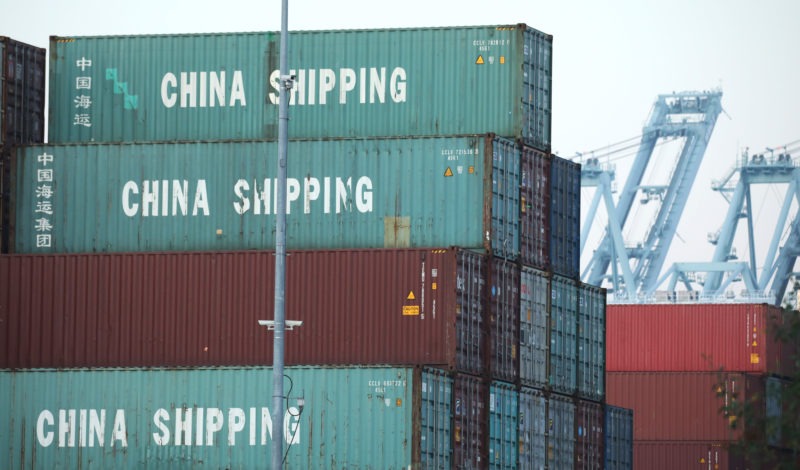Key points in the US-China ‘phase one’ deal
The Port of Los Angeles, the nation’s busiest container port (Mario TAMA)
<p>Washington (AFP) – After nearly two-years of bare-knuckle battling, Washington and Beijing on Friday at last announced a bargain to end the dispute.</p><p>The agreement came two months after US President Donald Trump first announced a "phase one" deal.</p><p>Below are major elements of the deal announced Friday.</p><p></p><p>- Agreement in principle -</p><p></p><p>The world’s top two economies — which engage in over $730 billion two-way trade annually — have yet to sign the text of the deal but say they have a bargain in principle. </p><p>US officials say they expect to sign the pact in early January after a legal review and once they have made certain the English and Chinese versions of the text are equivalent.</p><p>Officials will work diligently to complete a legal review and translations of the text before a final signing, Wang Shouwen, deputy minister of commerce, said Friday.</p><p></p><p>- Areas covered – </p><p></p><p>US and Chinese officials said the agreement includes protections for intellectual property, food and farm goods, financial services and foreign exchange, and a provision for dispute resolution.</p><p>"Importantly, the agreement establishes a strong dispute resolution system that ensures prompt and effective implementation and enforcement," US Trade Representative Robert Lighthizer said in a statement Friday.</p><p>US officials have long said enforcement was crucial to ensuring that China holds up its end of the bargain, an area of nagging skepticism.</p><p></p><p>- Boost for US agriculture -</p><p></p><p>Trump has promised that any deal would include a commitment from China for a massive increase in purchases of US farm products.</p><p>At the White House Friday he said, "I think in agriculture they will hit $50 billion."</p><p>But US officials told reporters China’s commitments for imports of $200 billion in all across four sectors including energy and manufacturing, would unfold over two years. </p><p>For agriculture, that would mean a return to 2017 levels when American farmers exported $19.5 billion in products to China. Those exports tumbled by more than $9 billion in 2018 as the trade war began and Beijing retaliated against US tariffs with punitive duties.</p><p>Han Jun, vice minister of agriculture in Beijing, said the partial agreement also would boost China’s farm exports to the United States, including cooked poultry, pears and dates.</p><p>"Some of these problems have been talked about for more than 10 years, and this time there has been a substantive breakthrough," he said.</p><p></p><p>- Tariffs on hold -</p><p></p><p>As part of the deal, Trump canceled 15 percent tariffs that had been due to hit Sunday on $160 billion in Chinese goods, especially electronics likes cell phones and computers, which would have been particularly painful to US consumers.</p><p>And in a major concession, the US will slash in half the 15 percent tariffs on another $120 billion imposed September 1, on consumer goods like clothing.</p><p>While Chinese officials said the US agreed to roll back the other tariffs in stages, for now Washington will keep in place the 25 percent duties on $250 billion in imports.</p><p>China’s Vice Finance Minister Liao Min did not specify whether Beijing planned to cancel existing tariffs on US imports to China.</p><p>In September, Beijing removed tariffs imposed on 16 categories of US products.</p><p>burs-Dt-dg/hs</p><p></p><p></p>
Disclaimer: Validity of the above story is for 7 Days from original date of publishing. Source: AFP.


